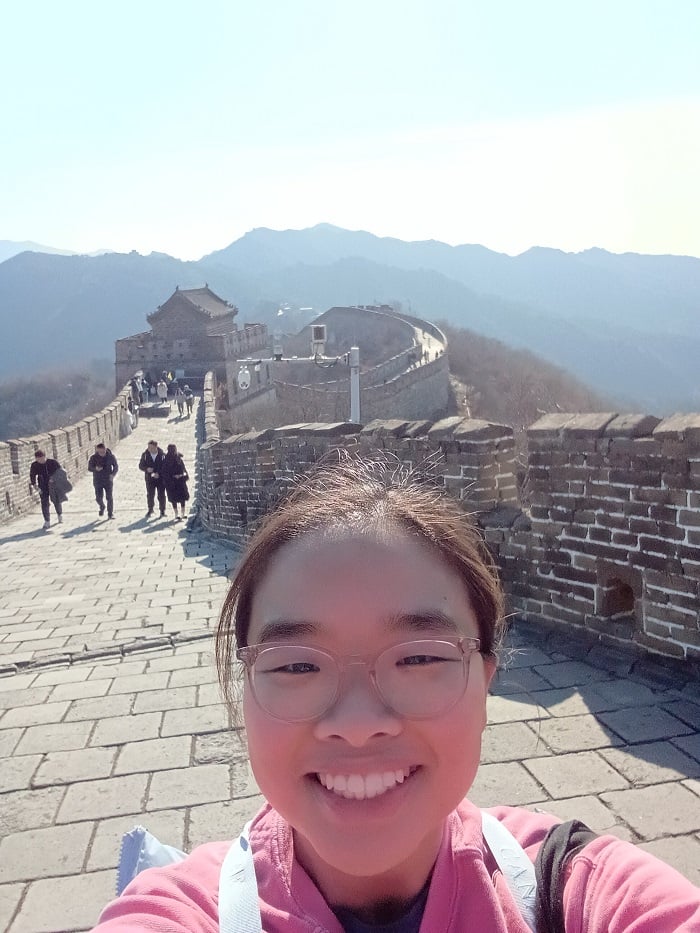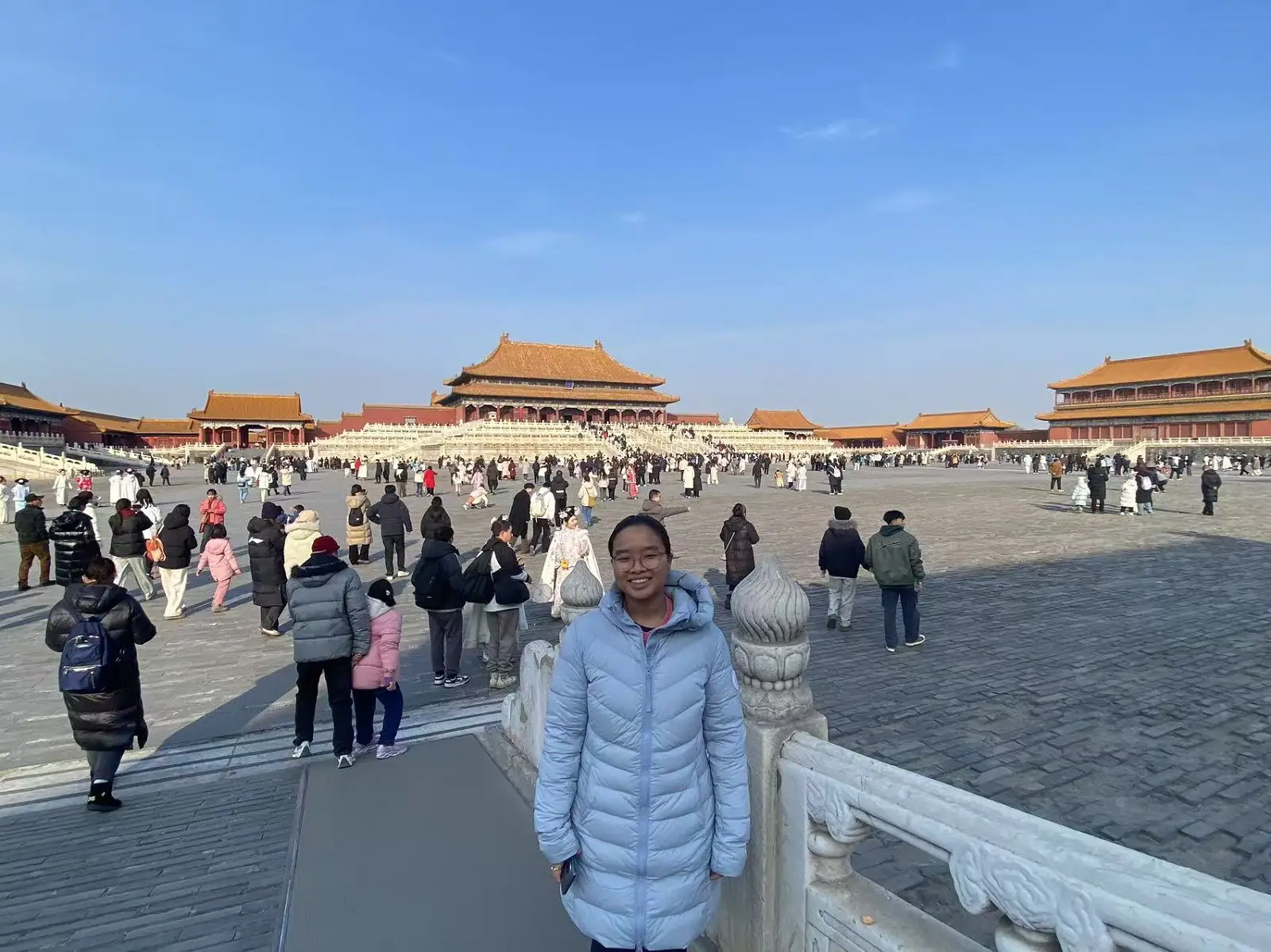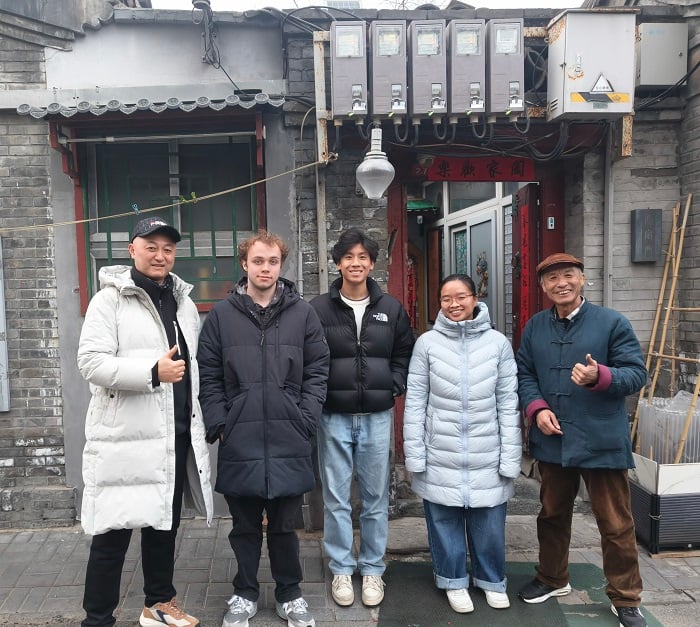Written by Sadie Sadler (Middlebury College), Student at CET Beijing, Janterm 2025 and Middlebury in Beijing, Spring 2025
As a history major with a focus on Chinese history, and as a Chinese-American adoptee, studying abroad in Beijing was the opportunity of a lifetime. During my two months in Beijing thus far, I have developed an even stronger connection to my identity by not only improving my Chinese language abilities, but also by interacting with locals on a daily basis and immersing myself in the culture. Visiting 名胜古迹, or places of historical significance and scenic beauty, is one of my favorite activities to do in Beijing. Having learned about the Great Wall, Summer Palace, Forbidden City, and HuTongs in class, I now have the opportunity to experience history firsthand.
Great Wall
On a cold but sunny Saturday, CET students, roommates, and teachers all set out to visit 长城, or the Great Wall. As we got off the bus, we were surrounded by restaurants and vendors selling all kinds of souvenirs. After taking another short bus ride to the base of the wall, we started the hike up. Though the hike up put my legs to the test and made me shed layer after layer of clothing, it was all worth it once I reached the top.

Standing on the Great Wall felt like I was on top of the world. The light breeze, the sunshine, the feeling of accomplishment after hiking up 100 flights — it was a perfect moment. Even though it was winter, the view was breathtaking. Seeing the Great Wall stretch for miles up, down, and around the mountains made me reflect on how impressive it is that the Qin Dynasty could begin constructing such a massive wall over 2,000 years ago. It’s no wonder it was deemed one of the New Seven Wonders of the World.
As I walked along the wall and came across old cannons and watchtowers, I could imagine the Chinese military heroically protecting the wall against the Japanese during the 1933 Defense of the Great Wall. After a couple of hours exploring and taking many pictures, my friends and I decided we would not put our knees through the grueling hike down and took the cable car down instead.
Summer Palace
The next day, my classmate and I decided to visit 颐和园, the Summer Palace. Although we were exhausted from the trip to the Great Wall, we did not want to squander our time together in Beijing, as she was only attending CET’s Janterm program. So, we took a quick taxi ride to the 2.9 square kilometers of imperial buildings and gardens. As we strolled throughout the various sections of the palace grounds, we came upon beautiful pagodas, crystal clear lakes, and small islands perfect for admiring the surrounding hills.

If only I could be like Empress Dowagers Chongqing and Cixi during the Qing Dynasty and have such a picture-perfect summer home. While some areas were filled with tourists, other spaces were quiet and serene. After we walked and talked for a few hours and stopped many times to take in the scenic views, we headed back to campus. Between the Great Wall and Summer Palace, it was certainly an amazing weekend and a great start to my time in Beijing.
Forbidden City
A week later, my roommate and I traveled the short subway ride to 故宫, the Forbidden City, also known as the Imperial Palace. Because it was the weekend, the palace was packed with Chinese and foreign tourists alike, but that did not stop us from exploring the expansive complex and admiring the traditional architecture. As we pushed through the crowds, we were able to peer inside a few special halls, such as the Hall of Supreme Harmony, and see magnificent artifacts like the emperor’s golden throne. I was amazed by all the palace’s grandeur.

In the outer court, I could picture the hustle and bustle of government officials running the vast empire, while in the inner court, I could imagine the emperor enjoying quiet leisure time with his family. After walking through the complex and stopping to view a special exhibit about ancient jade, my roommate and I then walked to the top of the imperial Jingshan Park right across from the palace.
From the top, we got a beautiful bird’s-eye view of the entire Forbidden City. In keeping with the imperial theme, we ended the day with a staple of the imperial menu during the Ming dynasty and my favorite Beijing dish: Peking duck.
HuTongs and Cricket Fighting
Throughout my time in Beijing, I have had many experiences in Beijing’s old 胡同 hutongs, which are narrow alleyways between rows of 四合院, traditional courtyard residences. Whether the hutongs are now filled with bustling tourist shops and modern restaurants, such as the popular Nanluoguxiang, or remain as quiet residential neighborhoods, hutongs hold so much Beijing history.
My favorite experience in a hutong was learning about cricket fighting. One of my CET teachers set up a special activity for me and a few other classmates to meet one of China’s current best cricket fighters. While I had seen cricket fighting in a Chinese movie, I had no idea it was such a popular and well-established sport.

In the hutong, the cricket fighting master taught us about the over-900 year long history and showed us the various tools it takes to care for and train the crickets. Who knew crickets had their own special water and food bowls!? Unfortunately, because it was winter and cricket fighting only happens in warmer temperatures, we were not able to watch a live match. But the master did show us his prized cricket, which was peacefully sleeping in his little home, and a video of a match, which I found very interesting, despite being someone who often runs away from bugs. Cricket fighting will definitely be one of my favorite stories to tell when I return home.